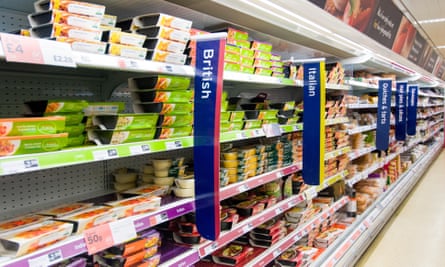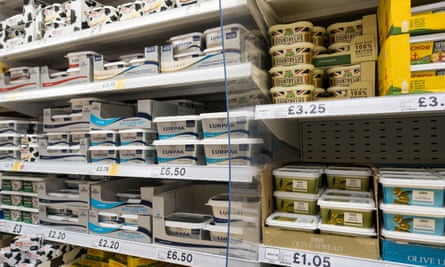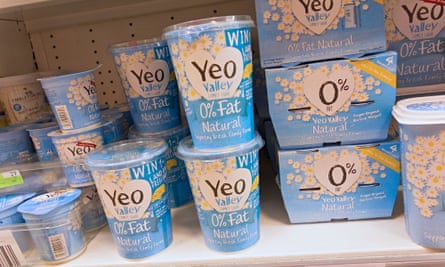Paying more for less: Which? lays bare size of ‘shrinkflation’ and ‘skimpflation’ | Consumer affairs
Sausages with less pork, chicken enchiladas with reduced meat content and shrunken pats of Lurpak butter are among the downsized and downgraded groceries being offered to consumers as retailers and manufacturers cut costs, a consumer group has claimed.
Which? highlighted a range of products it said were subject to “shrinkflation” – when pack sizes are made smaller but the cost is not cut, or “skimpflation” – when expensive ingredients are reduced but the price consumers pay remains the same.
Listerine Fresh Burst mouthwash was “among the worst examples of shrinkflation”, it said, with the size of a bottle cut by 17%, from 600ml to 500ml. At Tesco it went up in price by 52p, meaning the price per 100ml was up 46%.

Examples of recipe changes found by Which? included two own-brand lasagnes, with Morrisons and Sainsbury’s reducing their premium ranges to 26% beef. Previously, Morrisons The Best lasagne had 30% beef, while Sainsbury’s Taste the Difference version had 28%.
At Tesco, the meat content of “tex mex” chicken enchiladas had been cut from 27% to 20%, while the pork in the Finest sausages had been reduced from 97% to 90%.
Tesco said the recipe for the sausages had been reformulated in 2021, before the inflation rate escalated, and that changes to its products were “often to make them tastier or healthier”.
In the dairy section, Which? found the organic dairy brand Yeo Valley’s spreadable butter had gone from containing 54% butter to 50%. The consumer group also highlighted cuts in the pack sizes of some Lurpak and Yeo Valley products.

The Guardian has previously revealed changes to recipes as manufacturers and retailers attempt to offset rising ingredient and production costs.
Last summer, it emerged that the volume of olive oil in many popular spreads had been reduced from 21% to 10% and other changes meant consumers were getting a poorer product for their money.
Retailers have argued that reducing the size of a product instead of increasing its price has helped consumers. But three-quarters of shoppers said that was not a transparent practice, while a similar proportion said it was not helpful, Which? reported.
Ele Clark, the retail editor at the consumer group, said: “Our research shows that, while some popular products are subtly decreasing either in size or quality, the same can’t be said for their prices – which means shoppers are inadvertently paying more for less.
“Supermarkets and manufacturers must be more upfront by making sure changes to popular products are clear, and by ensuring that unit pricing is prominent, legible and consistent instore and online so that shoppers can easily compare prices across different brands and pack sizes.”
after newsletter promotion
A spokesperson for Kenvue, which makes Listerine, said: “Like many other manufacturers, we are faced with cost increases, especially in raw material and production costs, and have had to adjust our prices. The current recommended retail price for Listerine reflects these cost increases and our ongoing investment in the product.”

Yeo Valley said changes to pack size had been driven by rising costs and communicated in advance to consumers. Liz Jones, a brand manager, added: “While pricing is set by retailers, we made the hard decision to reduce the pack size to help keep organic [food] as accessible as possible.”
She said the recipe change came after testing with consumers to develop a product “where the level of butter and total fat in the product could be reduced without compromising on taste and quality”.
Andrew Opie, the director of food and sustainability at the British Retail Consortium, which represents retailers, said prices and sizes of all products were clearly labelled so that customers could make informed decisions about their purchases.
“Given the challenges facing households from the cost of living squeeze, retailers are solely focused to find ways to limit rising prices for customers against the rising cost of production, while maintaining the excellent quality of products,” he added.
Source: theguardian.com

